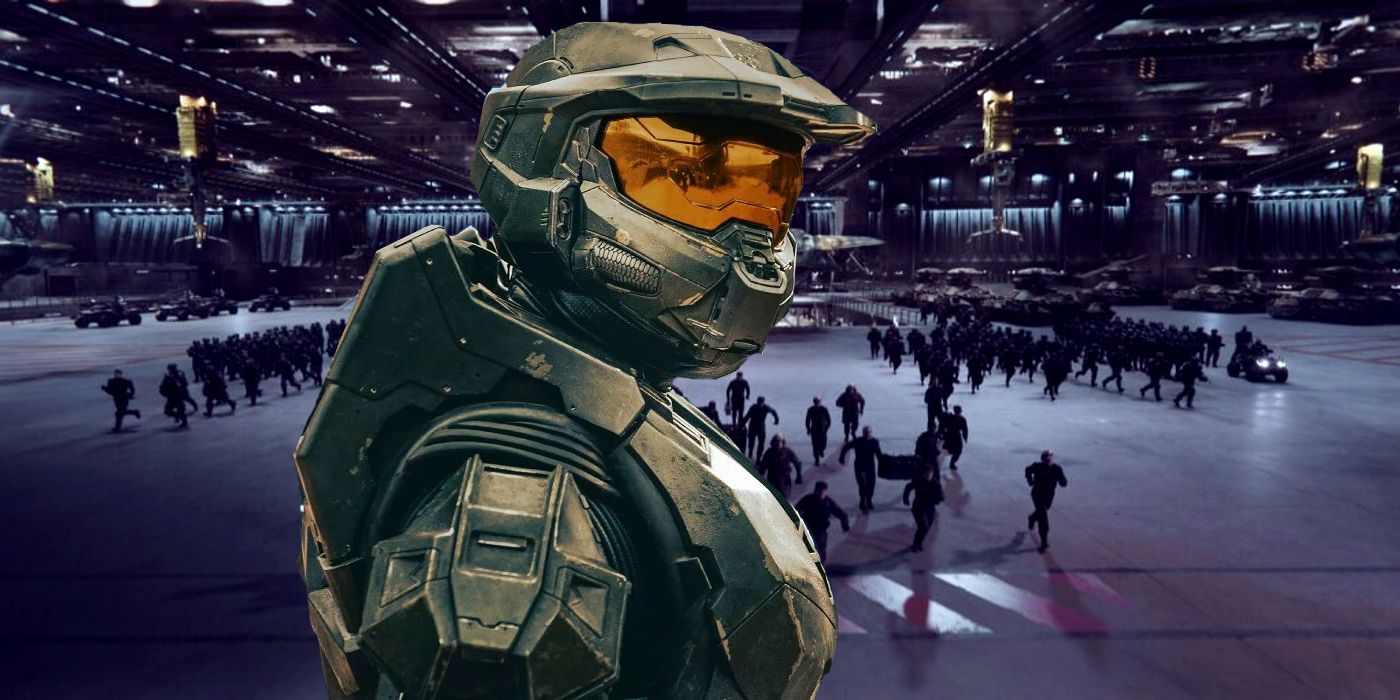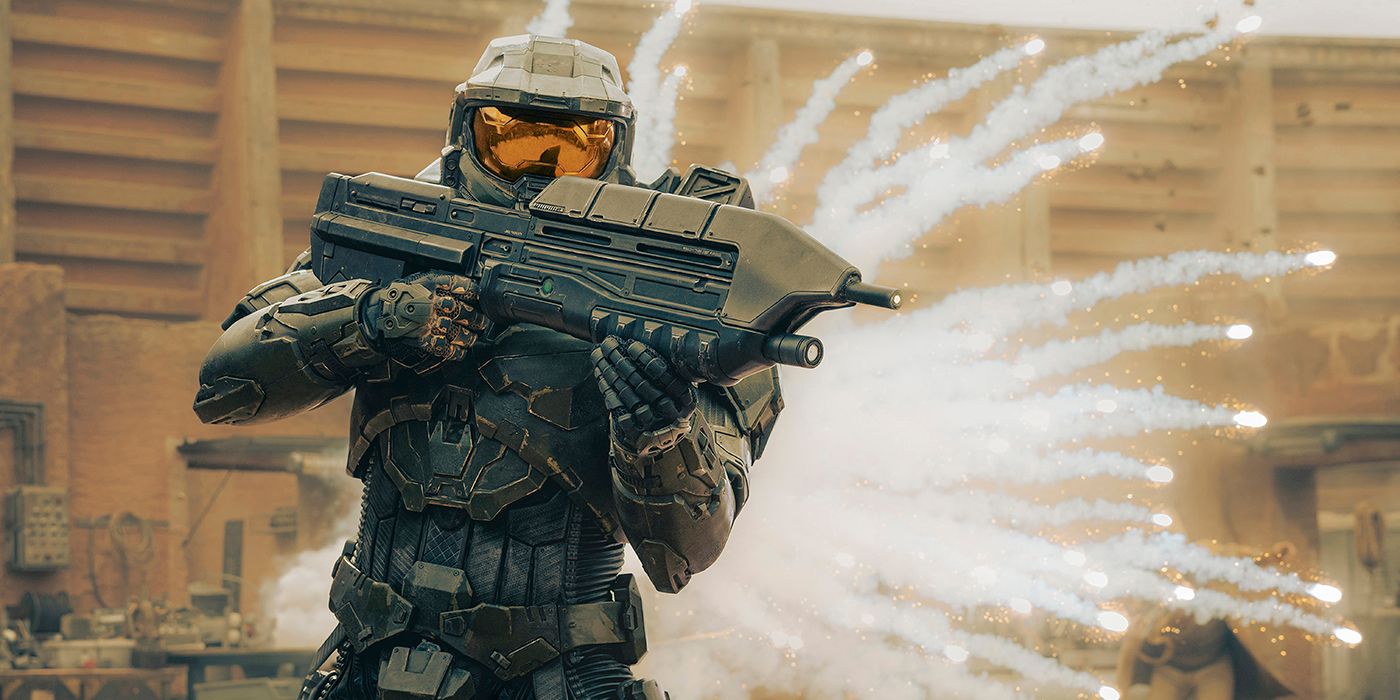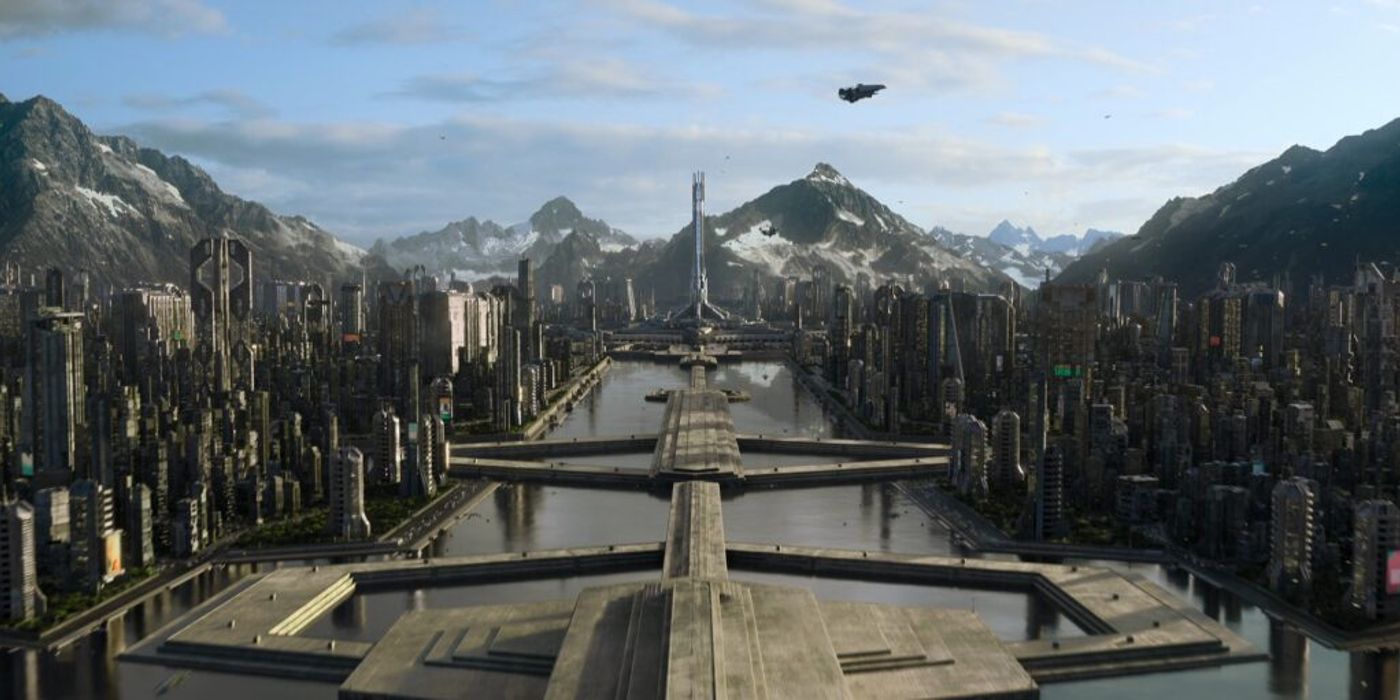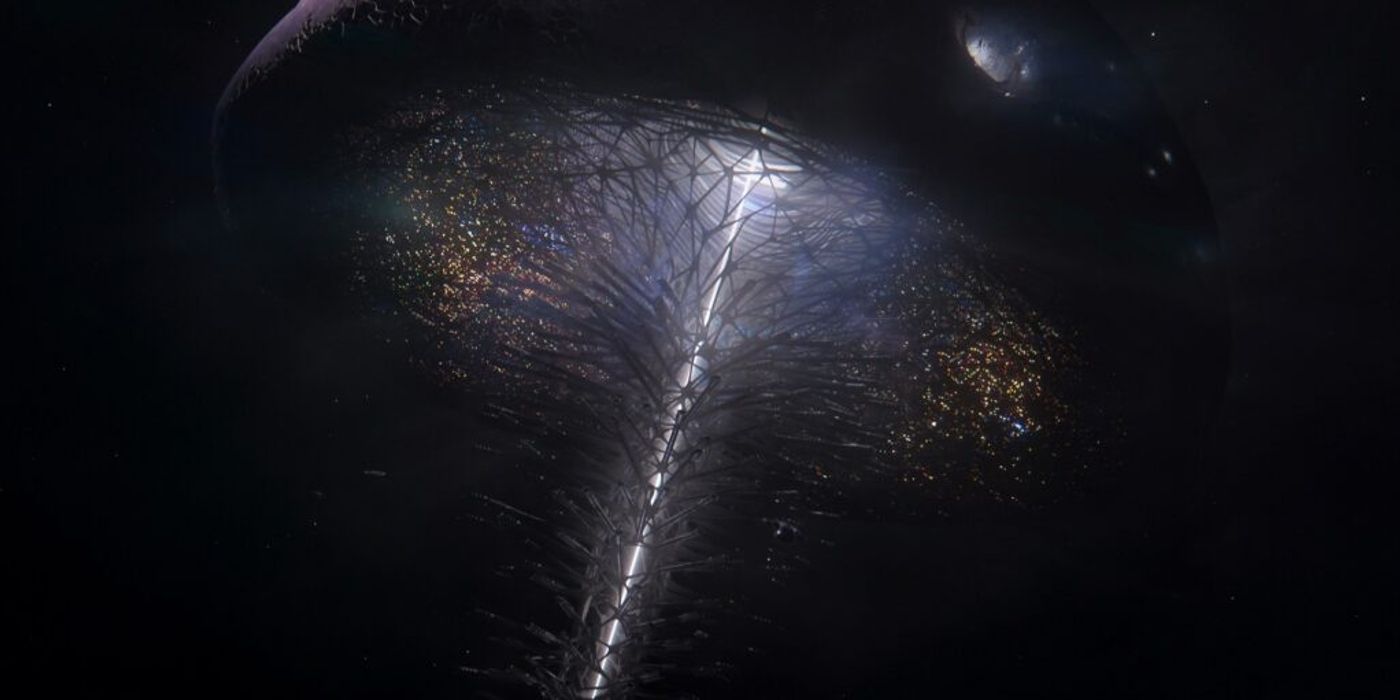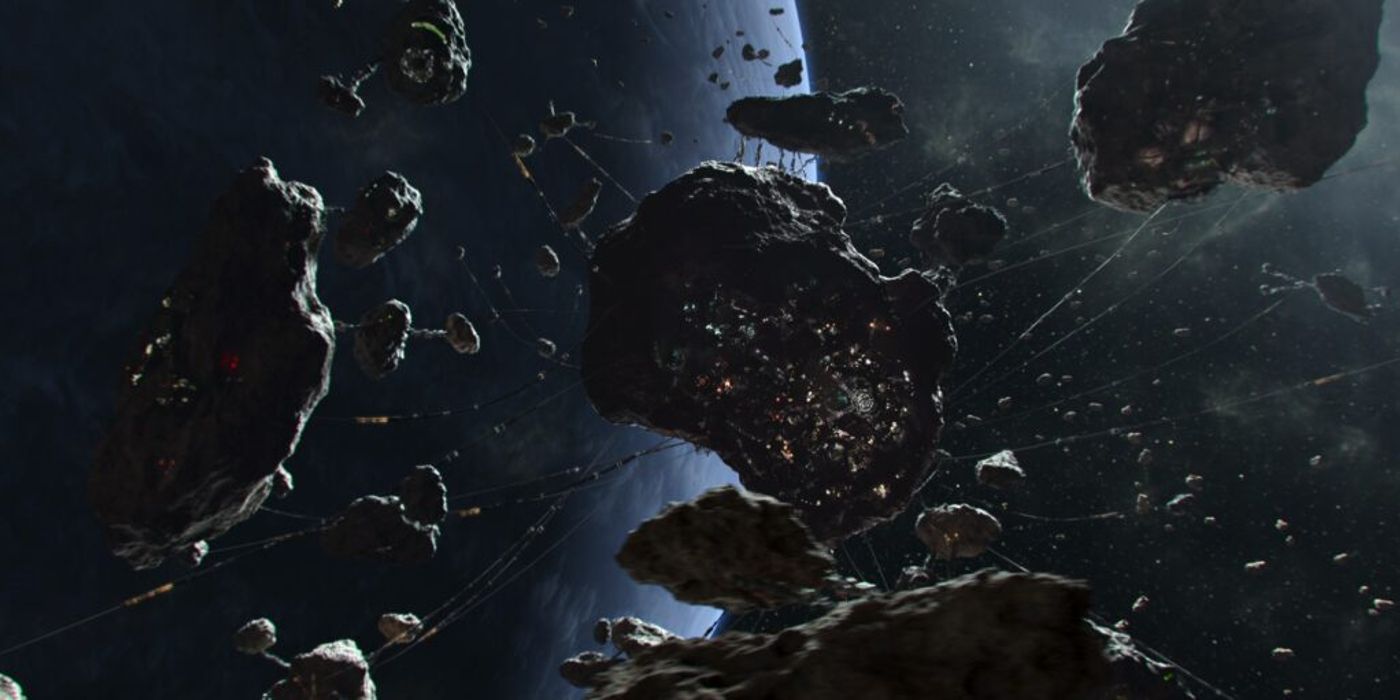This article contains spoilers for Halo episode 1.
Paramount+'s Halo series introduces viewers to an entire galaxy of new planets and locations. The much-anticipated Halo TV series has finally become a reality. Inspired by the popular games and novels, Paramount+'s Halo series introduces viewers to a galaxy at war. The stakes are cosmic in scale, with the human race desperately fighting for survival against an alien Covenant who seek to wipe them out.
In Halo, the galaxy is best understood as a series of concentric circles. Earth, the homeworld of the human race, lies at the center. The first area are known as the Inner Colonies, and these are the worlds where the ruling UNSC - United Nations Space Command - is strongest. But the next circle are the Outer Colonies, and these are far more turbulent and unpredictable. In truth, before the Covenant made their presence felt humanity was on the brink of an outright civil war, with a growing Insurrectionist movement in the Outer Colonies that threatened to destabilize the entire galactic economy. Spartans like the Master Chief weren't originally created to deal with the Covenant; they were engineered as the ultimate weapons against the Insurrectionists, and have been repurposed.
The Halo TV series promises to span the entire galaxy. In doing so, it will draw upon the games to bring some key locations to life - notably the important UNSC world of Reach and the Covenant capital city-world High Charity. But Paramount has also promised deep cuts into the franchise's wider lore, with the first episode introducing viewers to a world lifted straight from the books and marketing promising to bring one of Halo's more fascinating locations to life at last. Here's all viewers need to know about the different worlds seen in Halo season 1.
Madrigal
Paramount+'s Halo series opens on the planet Madrigal, described as a "Tier 4 Heavy Water Extraction Planet." One of humanity's Outer Colonies, Madrigal was home to a thriving Insurrectionist movement; a large number of the colonists had traveled to the Outer Colonies in hope of a life beyond Earth's rule, and they resented the UNSC's continued influence. In truth, the UNSC would never have allowed Madrigal to become independent, because it has the galaxy's highest concentration of a heavier hydrogen isotope that's essential for powering ships. Unfortunately the Covenant discovered Madrigal and slaughtered the colonists. They chose not to glass the planet, however, because of the presence of Forerunner relics they hoped to discover. Madrigal has been lifted from the wider Halo franchise; according to Joseph Staten's Contact Harvest, it was the closest world to Harvest - the first human colony discovered by the Covenant. There, Madrigal suffered a far worse fate, because the entire planet was glassed by the Covenant. One of the Elites involved in the attack was the future Arbiter, Thel Vadamee, and it will be interesting to see whether the Elite survivor in Halo episode 1 ascends through the ranks of his brethren in the same way.
Reach
It doesn't take long for the Halo TV series to move to Reach, one of the most important planets in the franchise's mythology. In the Halo games timeline, Reach is a planet in the Epsilon Eridani system, situated among the Inner Colonies. It was colonized in 2362, with human explorers prizing it for its rich titanium deposits. It became the UNSC's largest naval base, strategic headquarters, and second-largest population center - second only to Earth. Reach may have been an important world, but it was not without an Insurrectionist movement of its own, and a major terrorist attack was launched on the planet just months before the outbreak of the Human-Covenant War.
Reach remained the center of UNSC power throughout the next two decades, with the UNSC using its former mines to conceal countless black ops projects. In 2552, the Covenant discovered the location of Reach and attacked in force. Although the Covenant won, it was a Pyrrhic victory, because the Fall of Reach cost the Covenant a vast portion of their fleet. To the surprise of UNSC observers, the Covenant chose not to glass the planet, aware it contained Forerunner artifacts. Paramount+'s Halo appears to have accurately recreated Reach, which is clearly the center of UNSC power and influence; it is Dr. Halsey's base of operations, and it is also home to other projects attempting to reverse-engineer Covenant technology. It remains to be seen whether Reach will fall, as it did in the original Halo timeline.
High Charity
High Charity is essentially the Covenant's capital. The homeworld of the Prophets was destroyed long ago, and they moved to this mobile planetoid - a beautiful construct that can travel through slipspace under its own power. High Charity is powered by an ancient Forerunner drive, and at its apex is an artificial star that sustains life by generating heat and light. The Prophets dwell in High Charity, which in the original timeline is always protected by a vast Covenant fleet. It appears to be faithfully reproduced in Paramount+'s Halo series.
The Rubble
Trailers and marketing for Halo have celebrated a key location called the Rubble. In the main timeline, this artificial habitat was created by Insurrections and rogue Jackals, who lived in an uneasy truce. Hundreds of asteroids have been hollowed out and transformed into living quarters, with docking tubes linking the habitats and holding them all in place; a powerful artificial intelligence maintains the Rubble, carefully monitoring to ensure it remains stable in spite of the countless loose asteroids in the belt. Its population expanded when Insurrectionist survivors from Madrigal headed to the Rubble, seeking to establish a new life there. The Rubble became a security nightmare for the UNSC, because many of the Insurrectionist ships there contained navigational data that could lead the Covenant to Earth if it fell into the wrong hands - and the presence of Jackals on the Rubble made that terrifyingly possible. At one point, a team of Spartans was sent to the Rubble to destroy this navigational data. According to Paramount, in the Halo TV series the Rubble is the home of a rogue Spartan named Soren-066.

